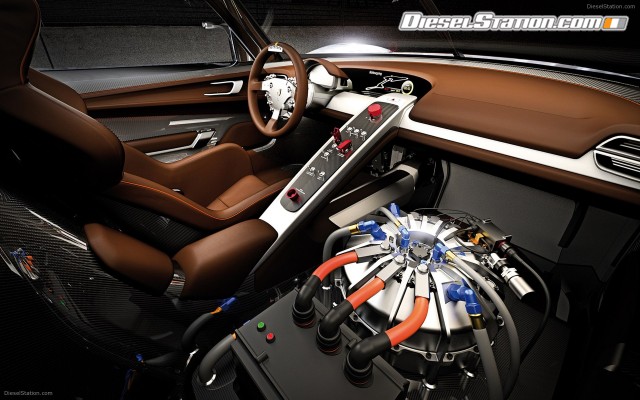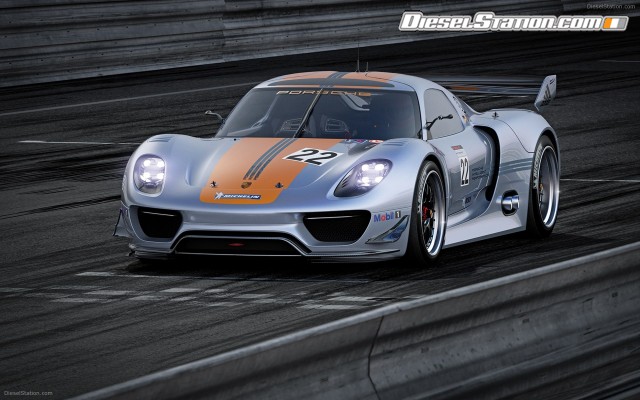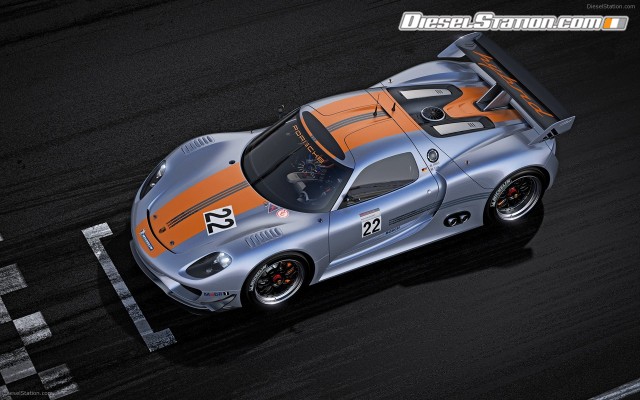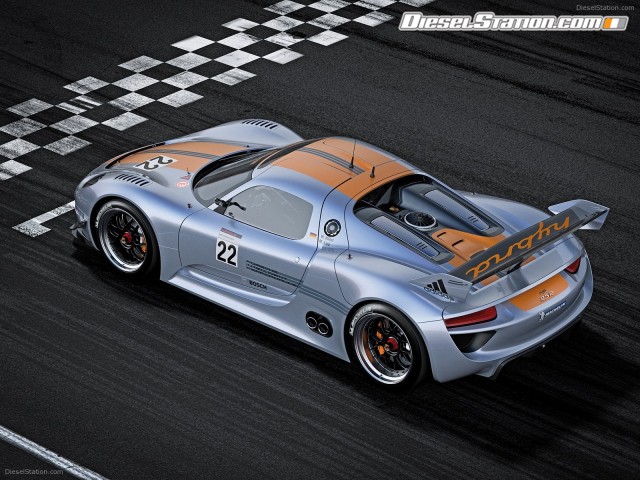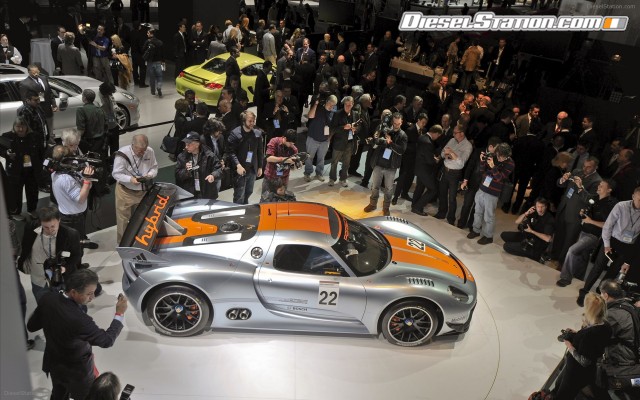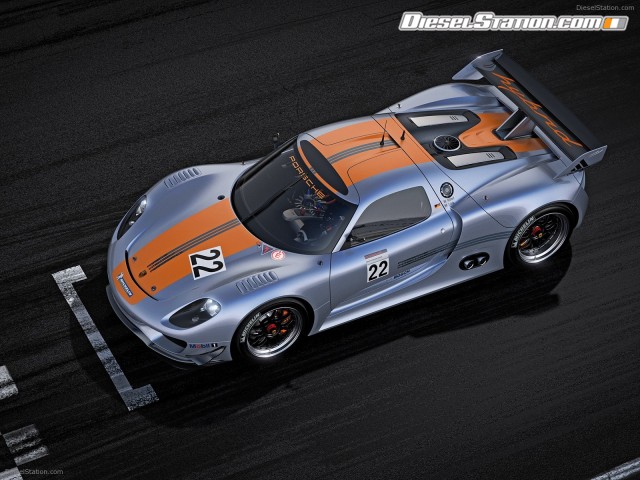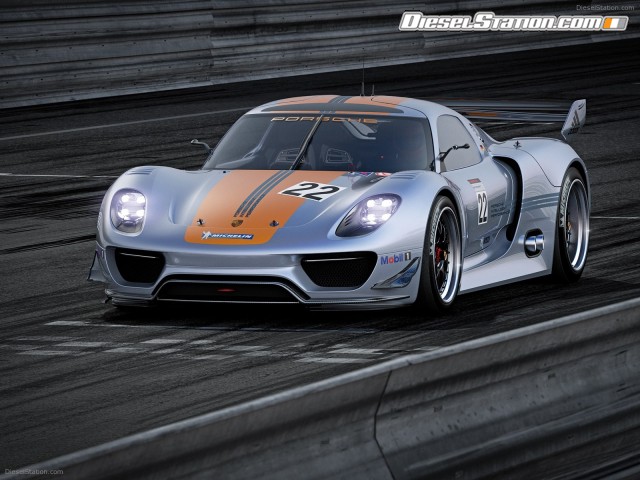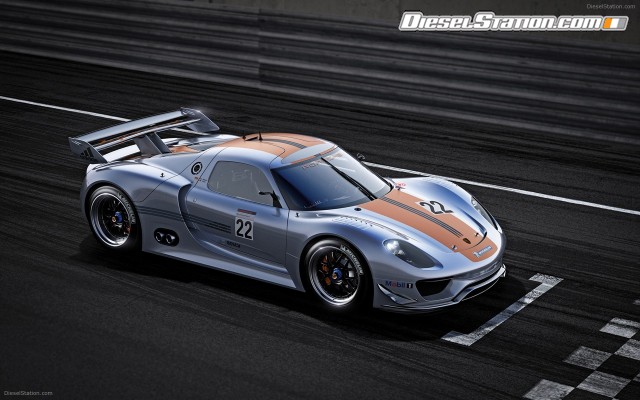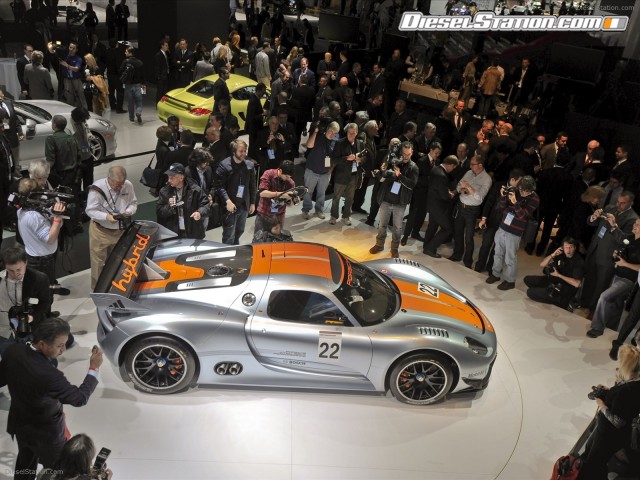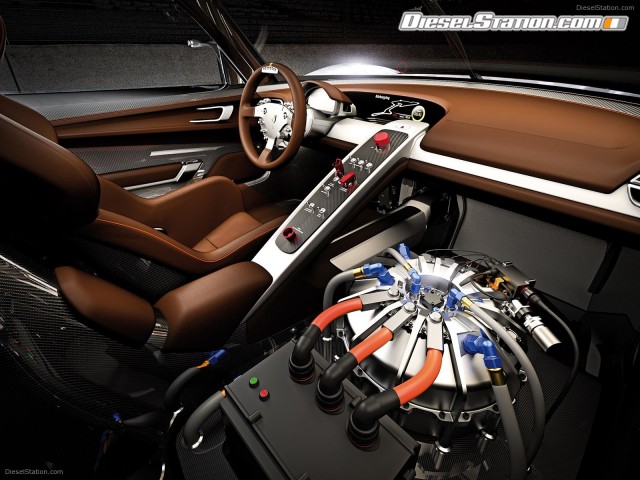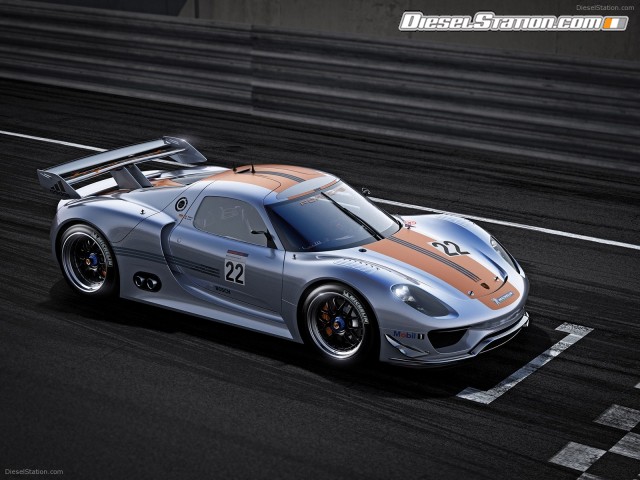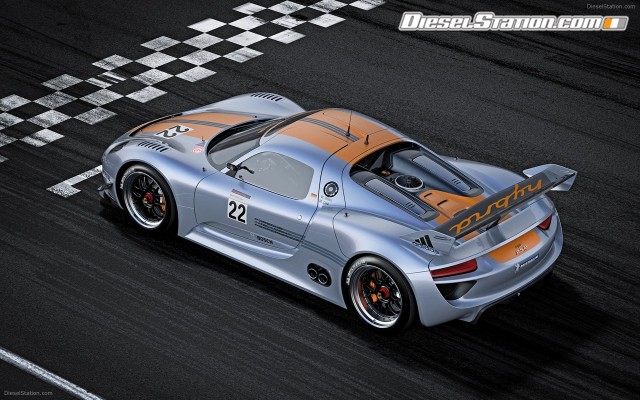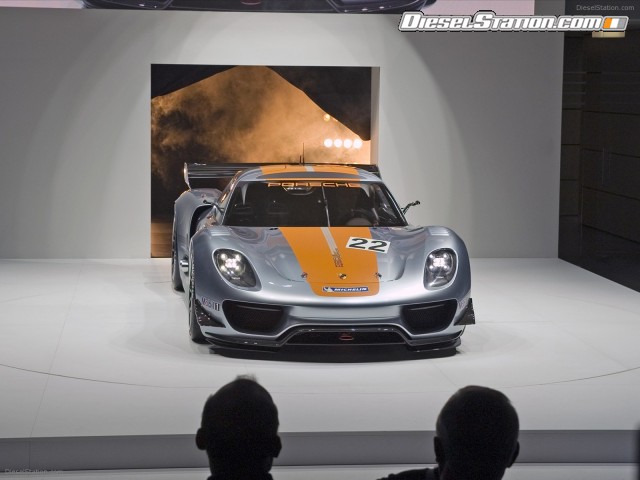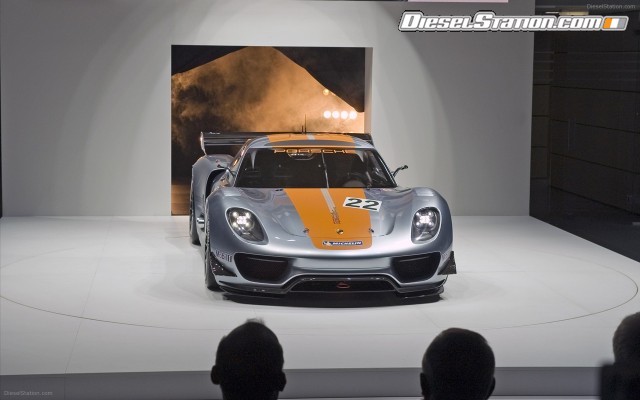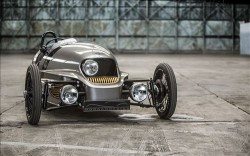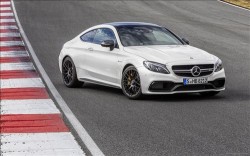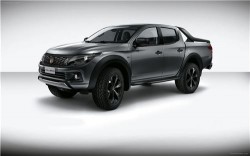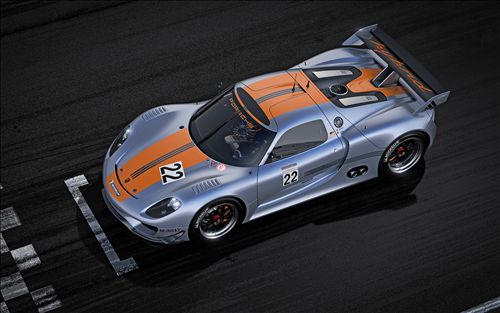Porsche 918 RSR Concept made the world premiere at the Detroit Auto Show 2010 earlier this month. The 918 RSR concept is a high-end synthesis of Porsche’s 2010 successful hybrid concepts – the 911 GT3 R Hybrid and the 918 Spyder. It is a true ‘racing laboratory’ featuring an updated V8 engine from the successful RS Spyder race car with an output of 563 hp at 10,300 rpm. In addition, it features electric motors on the two front wheels that each contribute 75 kW, i.e. a total of 150 kW, to provide peak drive power of exactly 767 hp. This additional power, which is generated during braking, is stored in an optimized flywheel accumulator. Find more details on the way flywheel accumulator functions in the official press release after the jump.
DETROIT, MICH. – Porsche AG opened the North American International Auto Show today with the World Premiere of the Porsche 918 RSR. This is the sports car manufacturer’s first appearance at the Detroit show since 2007. Matthias Mueller, President and CEO of Porsche AG said: "We are back in Detroit with a clear message: Porsche further extends its competencies when it comes to performance and efficiency. The Porsche 918 RSR impressively demonstrates the passion of our engineers and designers for developing the world's most advanced and best looking sports cars."
The 918 RSR concept is a high-end synthesis of Porsche’s 2010 successful hybrid concepts – the 911 GT3 R Hybrid and the 918 Spyder. It is a true ‘racing laboratory’ featuring an updated V8 engine from the successful RS Spyder race car with an output of 563 hp at 10,300 rpm. In addition, it features electric motors on the two front wheels that each contribute 75 kW, i.e. a total of 150 kW, to provide peak drive power of exactly 767 hp. This additional power, which is generated during braking, is stored in an optimized flywheel accumulator.
This auto show in the traditional venue of Detroit, nicknamed "The Motor City", is regarded as a leading international forum for trends and opinions at the beginning of the year. In this setting Matthias Mueller underlined the growing demand for Porsche, not only in the U.S. where sales increased nearly 30 percent during calendar year 2010, but also on a worldwide basis. The momentum on the product front resulted in an order intake by the end of last year that increased by approximately 50 percent to more than 110,000 vehicles. Customer deliveries for the calendar year were up over 25 percent to more than 95,000 cars. This success was mainly based on the new Panamera car line and the new generation of the Cayenne sporty off-roader.
From the tradition established by classic Porsche long-distance race cars such as the 908 long-tail coupé (1969) and the 917 short-tail coupé (1971), the Porsche designers created a link to the postmodernism of the “form follows function" philosophy. In the 918 RSR, the lines' elegant flow is dominated by muscular wheel arches, dynamic air intakes and a pulpit-like cockpit. A visible fan wheel between the ram air intake tubes and a rear spoiler with RS Spyder dimensions additionally emphasize the racing laboratory function. The new “liquid metal chrome blue" color which has been created underscores the sculptured curves of the forms, whilst the typical Porsche hybrid orange color on brake calipers and the body's longitudinal stripes lends remarkable touches.
Motor racing technology also dominates within the particularly light, torsionally stiff carbon fiber-reinforced plastic (CFRP) monocoque. The V8 engine is a further development of the direct injection engine from the successful RS Spyder race car and now offers an output of precisely 563 hp at 10,300 rpm in the 918 RSR. The electric motors on the two front wheels each contribute 75 kW, i.e. a total of 150 kW, to the peak drive power of exactly 767 hp. This additional power, which is generated during braking, is stored in an optimized flywheel accumulator.
In the 918 RSR, the two electric motors offer a torque vectoring function with variable torque distribution to the front axle. This additionally increases agility and improves steering response. Mounted upstream of the rear axle, the mid-engine is integrated with a racing transmission also based on the RS Spyder race car. This further developed six-speed constant-mesh transmission with longitudinally mounted shafts and straight-toothed spur gears is operated using two shift paddles behind the racing steering wheel.
The vehicle's functional equipment underscores its puristic motor racing character. Whether it be the characteristic doors which open obliquely upwards, the air intake in the roof bet ¬ween the wing doors, the quick-action locks on the front and rear CFRP lids, the two roof-mounted aerials for pit radio and telemetry, the RS Spyder-like small, lateral front flics or the air splitters beneath the front lip or no-profile racing slicks on 19" wheels with central locking, the vehicle can be clearly recognized as an experimental racing laboratory.
In contrast to the 918 Spyder concept car, unadorned racing atmosphere predominates in the interior of the 918 RSR. The figure-hugging bucket seat's brown leather covering cites the history of the gentleman driver; the gear flashes on the racing steering wheel and a recuperation display on the steering column in front of the display screen supply the pilot with information. Instead of the futuristic, ergonomically avant-garde centre console with touch-sensitive user interface from the 918 Spyder concept car, the 918 RSR's cockpit is split by a minimalistic console with rocker switches. Instead of a second seat, the flywheel accumulator is positioned to the right of the console.
This flywheel accumulator is an electric motor whose rotor rotates at up to 36,000 rpm to store rotation energy. Charging occurs when the two electric motors on the front axle reverse their function during braking processes and operate as generators. At the push of a button, the pilot is able to call up the energy stored in the charged flywheel accumulator and use it during acceleration or overtaking maneuvers. The flywheel is braked electromagnetically in this case in order to additionally supply up to 2 x 75 kW, i.e. a total of 150 kW, from its kinetic energy to the two electric motors on the front axle.
This additional power is available for around eight seconds when the system is fully charged. In the successful 911 GT3 R Hybrid, this additional power can also be used as a consumption aid depending on the racing situation, e.g. to delay pit stops or reduce the fuel tank volume and therefore the weight of the vehicle.
With the new 918 RSR racing laboratory, Porsche is now elevating this motor racing hybrid concept to an experimental level. In the 918 RSR, “Porsche Intelligent Performance" equates to research into methods for further sustainable efficiency improvement under the intensified conditions of the race track, lap times, pit stops and reliability – a metier in which Porsche has been demonstrating its success for over 60 years.
Finally, the starting number, 22, pays homage to the anniversary of a further triumph. Back in the days when overall victories in Le Mans were not yet an entirely routine matter within the Porsche racing department, the pilots Dr. Helmut Marko and Gijs van Lennep were the first to cross the finishing line in 1971's 24-hour classic. The distance record set by their Porsche 917 short-tail coupé – 5335.313 kilometers (3315.21 miles) at an average speed of 222.304 km/h (138.13 mph) – did not remain unbeaten for an eternity, but for exactly 39 years until 2010. At the time, the 917 in the Martini colors was also an experiment and far ahead of its time: a magnesium space frame set new standards in Porsche's lightweight construction domain.
About Porsche Cars North America, Inc
A wholly owned, indirect subsidiary of Dr. Ing.h.c.F.Porsche, Porsche Cars North America, Inc. and its 197 dealers offer U.S. customers some of the most technically advanced and high-performance vehicles in the world. Porsche cars are synonymous with supreme quality accompanied by first-class customer treatment. Also, Porsche is fully and publicly committed to being a leader in significantly lowering emissions, and saving fuel. The company’s guiding credo is “Porsche Intelligent Performance” and the goal is to prove that Porsche’s high performance and efficiency are not contradictory terms. This is nothing new for Porsche, which for 63 years has developed numerous technologies that have advanced vehicle performance, improved safety and spurred environmental innovations. Obviously, one expects such achievements from the most revered race car brand in the world --- one that has accumulated more than 30,000 motorsport victories. Today, PCNA imports the cars that are the product of this great history, including the iconic 911 series, the renowned Boxster and Cayman mid-engine sports cars, the high-end Cayenne sport utility vehicles and the four-door Panamera Gran Turismo cars.




